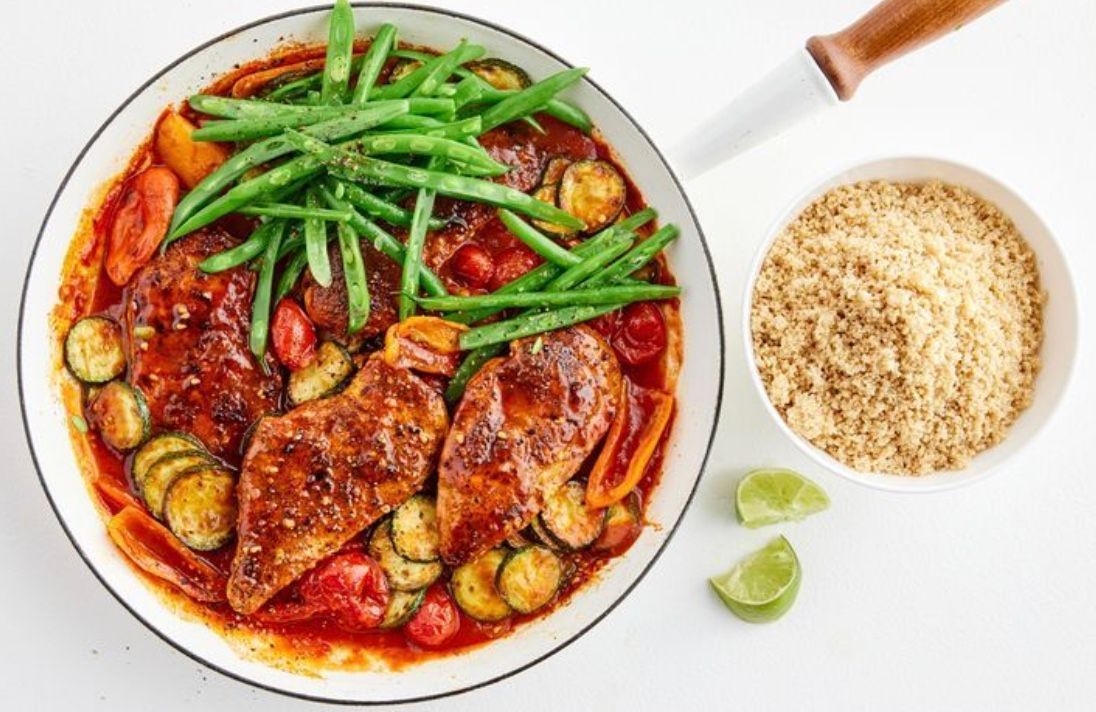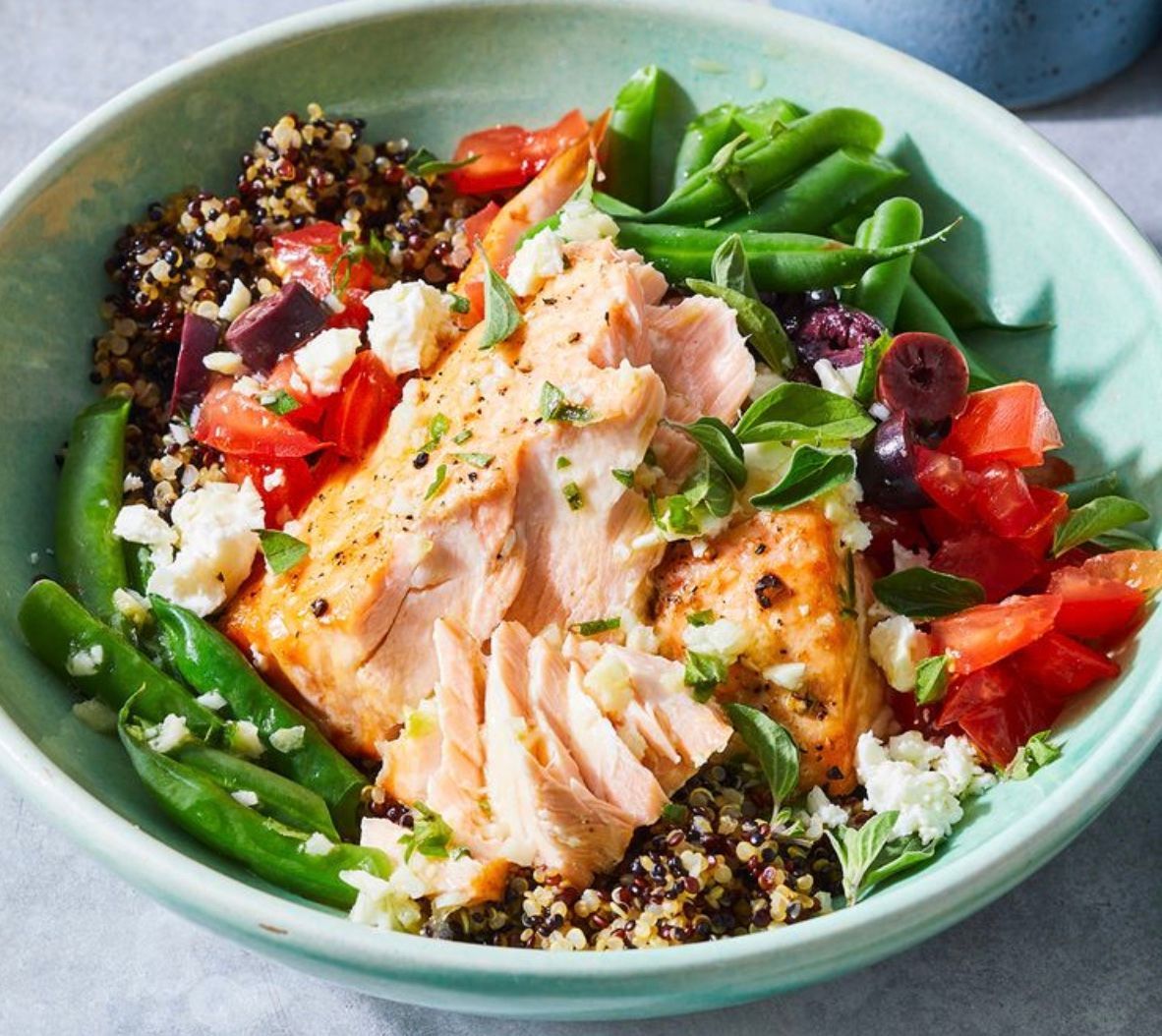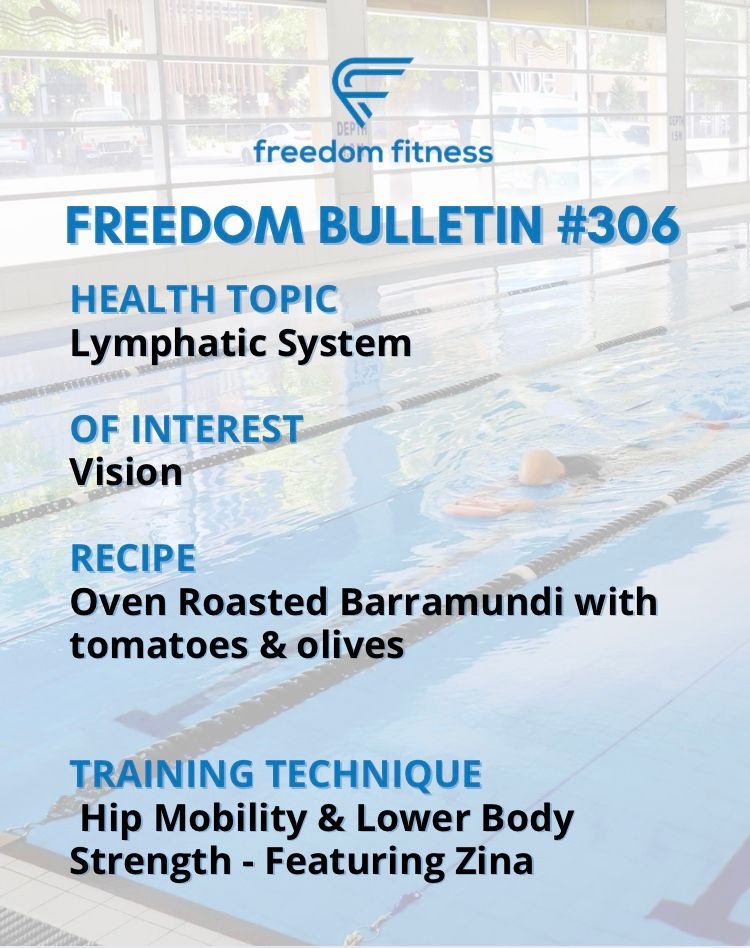August 9, 2020
Sugar

Ingredients 1 tsp smoked paprika 1 tsp ground cumin 1 tsp dried oregano leaves 1/4 tsp dried c hilli flakes 2 (about 500g) chicken breast fillets, halved horizontally 1 tbsp extra virgin olive oil 2 small zucchini, sliced 175g mini capsicums, deseeded, halved 1 tbsp no-added-salt tomato paste 400g can cherry tomatoes 2 tsp white balsamic condiment 140g (2/3 cup) wholemeal couscous 160ml (2⁄3 cup) boiling water 250g green beans, steamed, halved lengthways Lime wedges, to serve Instructions Step 1 Combine paprika, cumin, oregano and chilli. Sprinkle spice mixture over the chicken. Step 2 Heat half the oil in a large non-stick frying pan over high heat. Cook the zucchini for 1-2 minutes each side or until golden. Transfer to plate. Add chicken to pan and cook for 2-3 minutes each side or until browned and almost cooked through. Transfer to a plate. Step 3 Heat remaining oil in pan over medium heat. Add capsicum. Cook, stirring, for 2 minutes or until begins to soften. Stir through tomato paste. Add tomatoes and 125ml (1 ⁄2 cup) water. Bring to the boil. Reduce heat to low. Simmer for 6-7 minutes or until slightly reduced. Add chicken, zucchini and balsamic. Simmer for 5 minutes or until chicken is cooked through. Step 4 Meanwhile, combine the couscous and boiling water in a heatproof bowl. Cover and set aside for 3-4 minutes to absorb. Fluff with a fork. Nutrition and Cooking Times Serves: 4 | Prep time: 10 minutes | Cook time: 20 minutes Total time: 30 minutes Nutrient Value per serve: Calories: 480kcal | Protein: 30g | Fat: 28g | Carbohydrates: 28g

Ingredients 450g salmon fillet ½ teaspoon salt, divided ¼ teaspoon ground pepper 30g string beans (green, yellow, or a mix), trimmed and cut into 1-inch pieces 1 ¾ cups water ¾ cup quinoa (red, white, or tricolored), rinsed 3 tablespoons lemon juice 2 tablespoons olive oil 1 clove garlic, minced 2 teaspoons chopped fresh oregano, plus more for garnish, or 1/2 tsp. dried 1 medium tomato, seeded and chopped ¼ cup crumbled feta cheese ¼ cup pitted Kalamata olives, halved or sliced Instructions Preheat oven to 400 degrees F. Line a large baking sheet with foil. Place salmon filet on the prepared baking sheet and sprinkle with 1/8 tsp. salt and pepper. Bake until the salmon is no longer opaque in the center and flakes easily with a fork, 20 to 25 minutes. Let rest for 5 minutes, then flake the salmon into bite-size pieces (discard the skin). Meanwhile, bring 1 inch of water to a boil in a medium saucepan fitted with a steamer basket. Add 8 ounces beans; cover and cook until tender-crisp, about 5 minutes. Rinse the beans under cold water, drain well, and set aside. Combine 1 ¾ water, ¾ quinoa, and 1/8 tsp. salt in the saucepan; bring to a boil. Reduce heat to low, cover, and simmer until the quinoa is tender and most of the liquid has been absorbed, 15 to 20 minutes. Fluff with a fork. Whisk 3 tablespoons lemon juice, 2 tablespoons oil, 1 clove minced garlic, 2 teaspoons chopped oregano, and the remaining 1/4 tsp. salt in a small bowl. To serve, divide the quinoa among 4 dinner bowls. Arrange the salmon, beans, tomato, feta, and olives over the quinoa. Drizzle with the dressing and garnish with more fresh oregano, if desired. Nutrition and Cooking Times Serves: 4 | Prep time: 30 minutes | Cook time: 15 minutes | Total time: 45 minutes Nutrient Value per serve: Calories: 480kcal | Protein: 30g | Fat: 28g | Carbohydrates: 28g


